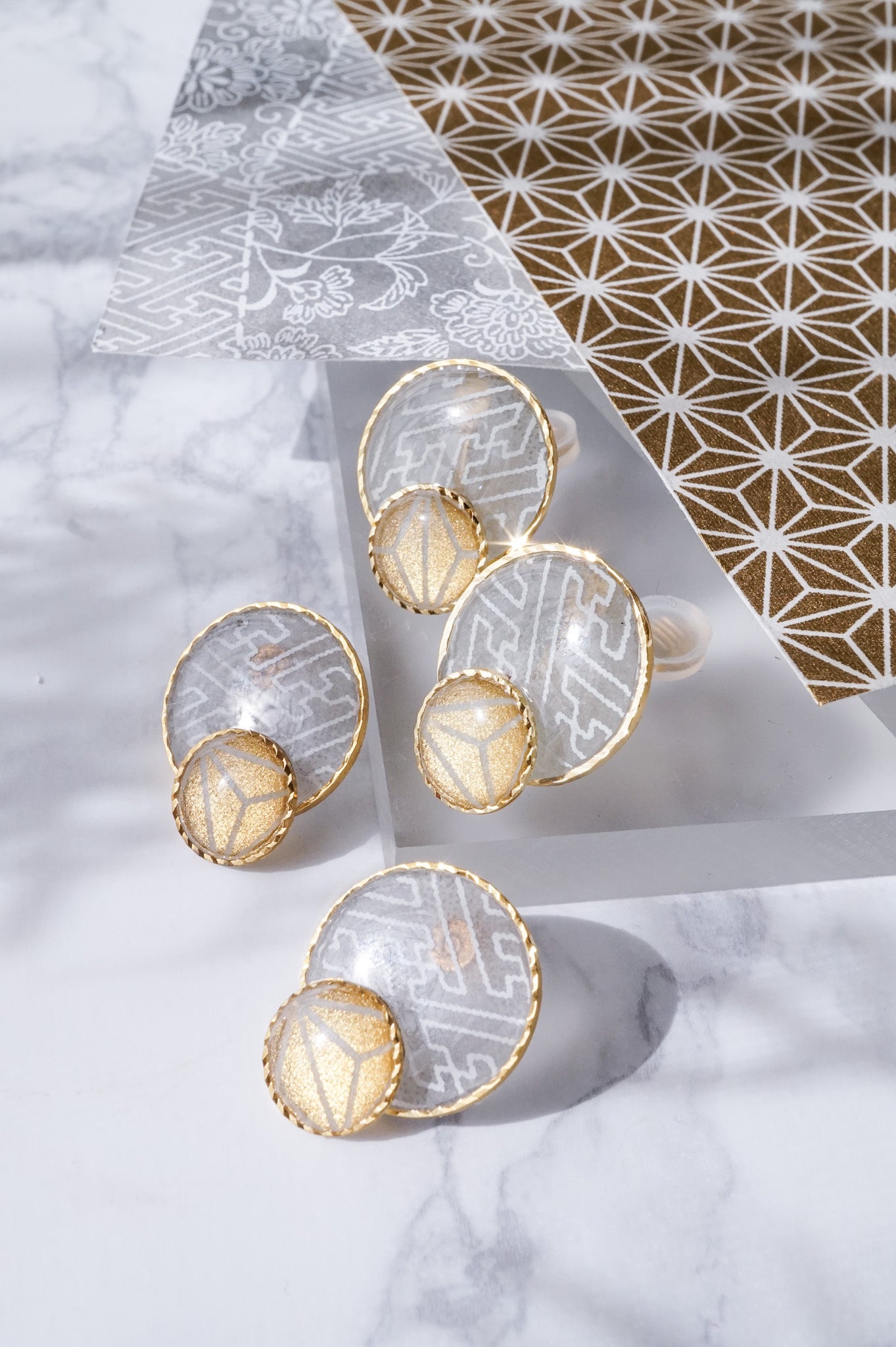Japan Paper hal - Online Store
Kumi earrings -Sayagata-
Kumi earrings -Sayagata-
Couldn't load pickup availability
Button-shaped earrings made by combining two types of washi paper.
The "Kumi" earring series features a design that allows you to enjoy traditional Japanese patterns by cutting out large patterns from washi paper. The color combination of two types of layered washi paper is a cute design that is very Japanese.
The size is 25mm x 20mm, which is neither too big nor too small, making it easy to use on an everyday basis.
These earrings are made from paper and resin and are lighter than they look, so they don't put any strain on your ears.
The washi paper used in this design
[Sayagata]
The Sayagata pattern is based on the Chinese character "manji" and is made by repeating swastikas. In the Buddhist world, "manji" means "happiness," and by repeating them, the Sayagata pattern means "eternal happiness." This pattern expresses the hope that one person's happiness will lead to someone else's happiness, spreading around and around.
[Asanoha]
This pattern is derived from the shape of the hemp leaf. As hemp grows straight and is strong, it was often used for baby clothes with the hope that the child would grow up healthy. It is a pattern that supports those who want to continue growing and moving forward.
[About the material]
Please choose from 14kgf earrings or clip-on earrings for the post fittings.
The metal of the earring post is 14kgf (14k gold filled ) And thin gold plating (gp) Unlike 14K gold, this jewelry has 1/20 of its total weight pressed with gold. Because the gold layer is thick, you don't have to worry about the gold peeling off even after long-term use. In addition, because the 14K gold layer is thick, it is less likely to cause metal allergies.
[specification]
Size: 25mm x 20mm
Weight: 2 g
Earrings : 14kgf (14k gold filled)
Clip-on earrings … gold plated alloy
Body: Japanese paper, resin
[Note]
・Prices shown are excluding tax.
・These earrings are one-of-a-kind items made by cutting out washi paper. Please note that the pattern may differ slightly from the photo because the location of the paper cut varies for each item.
Share













